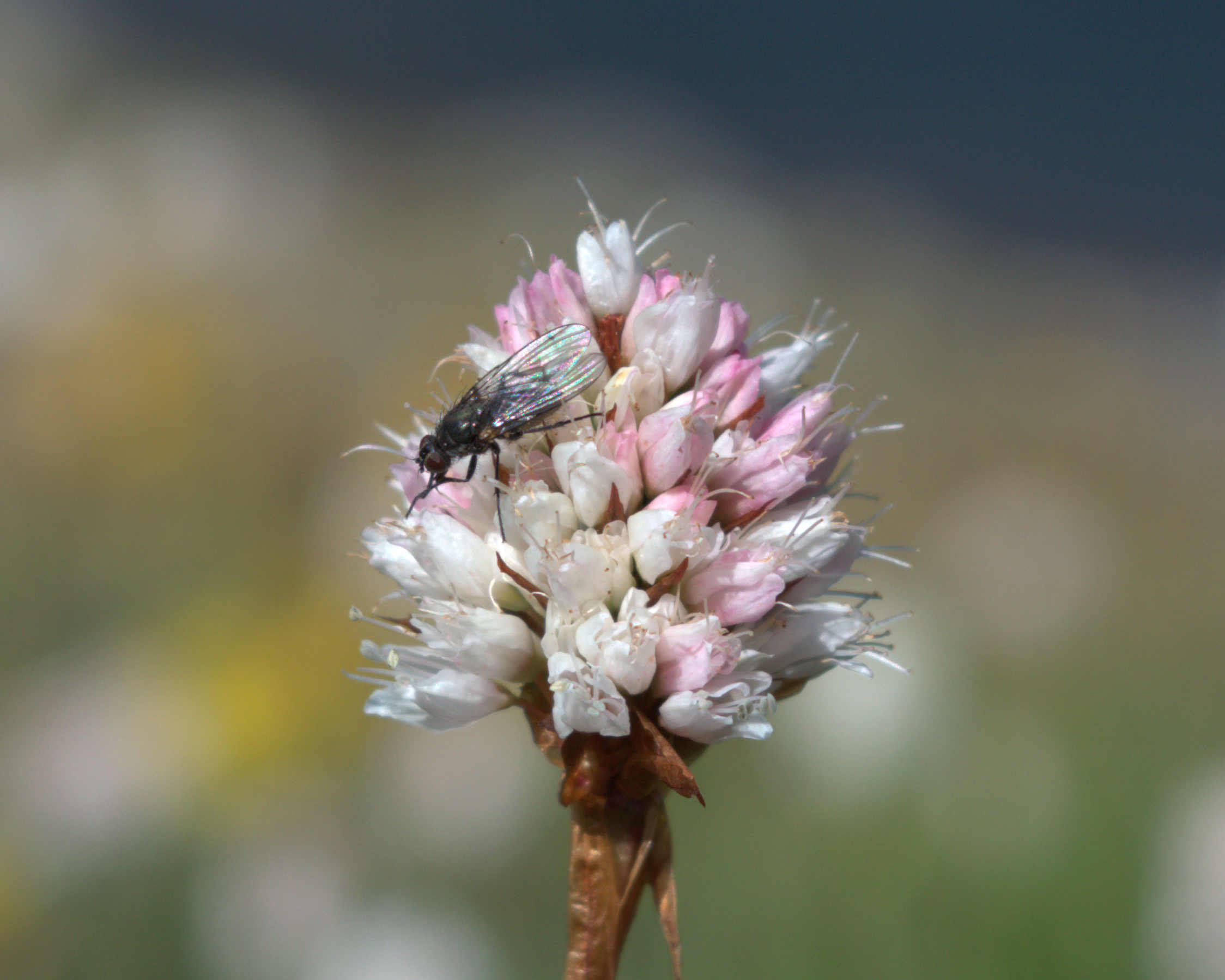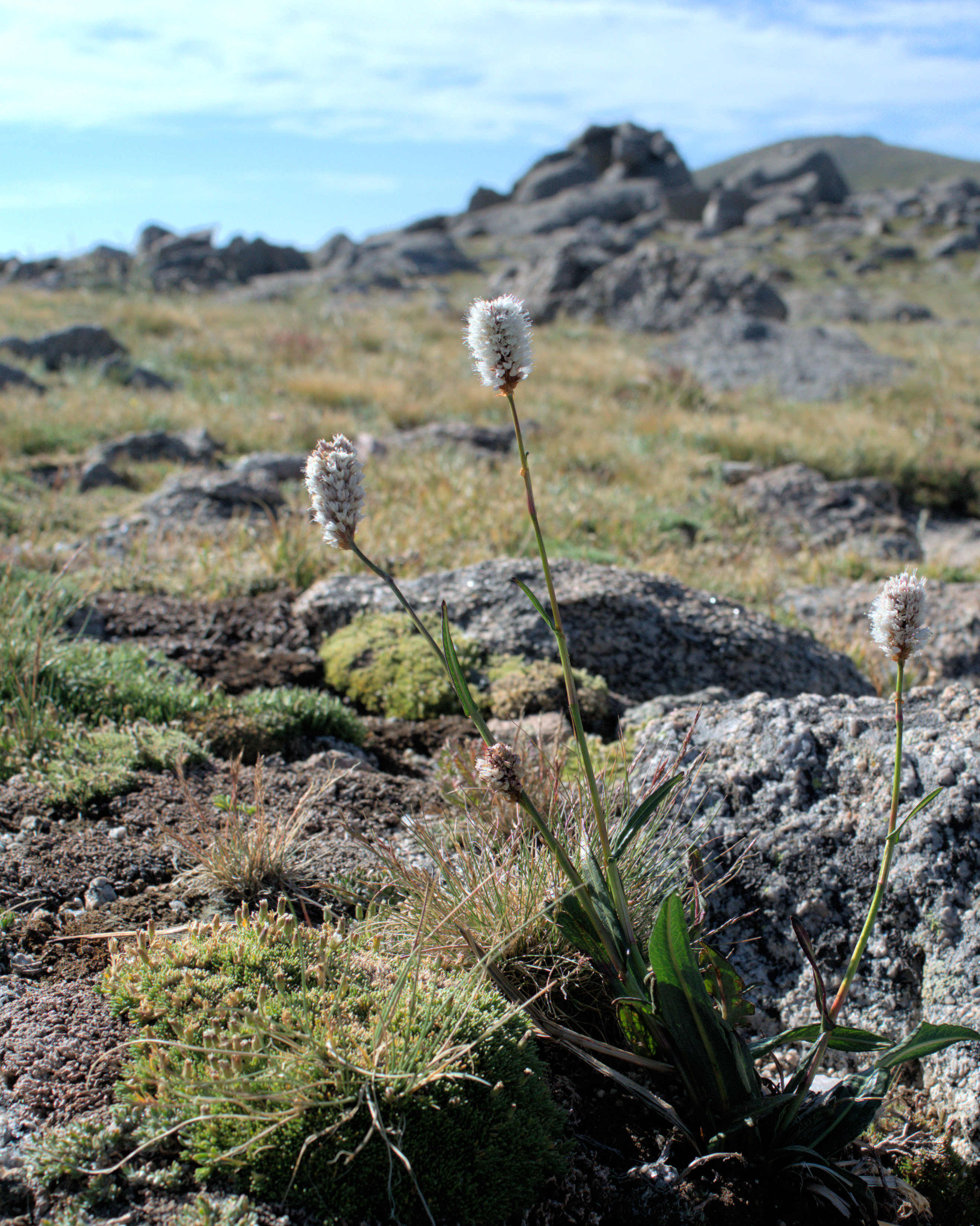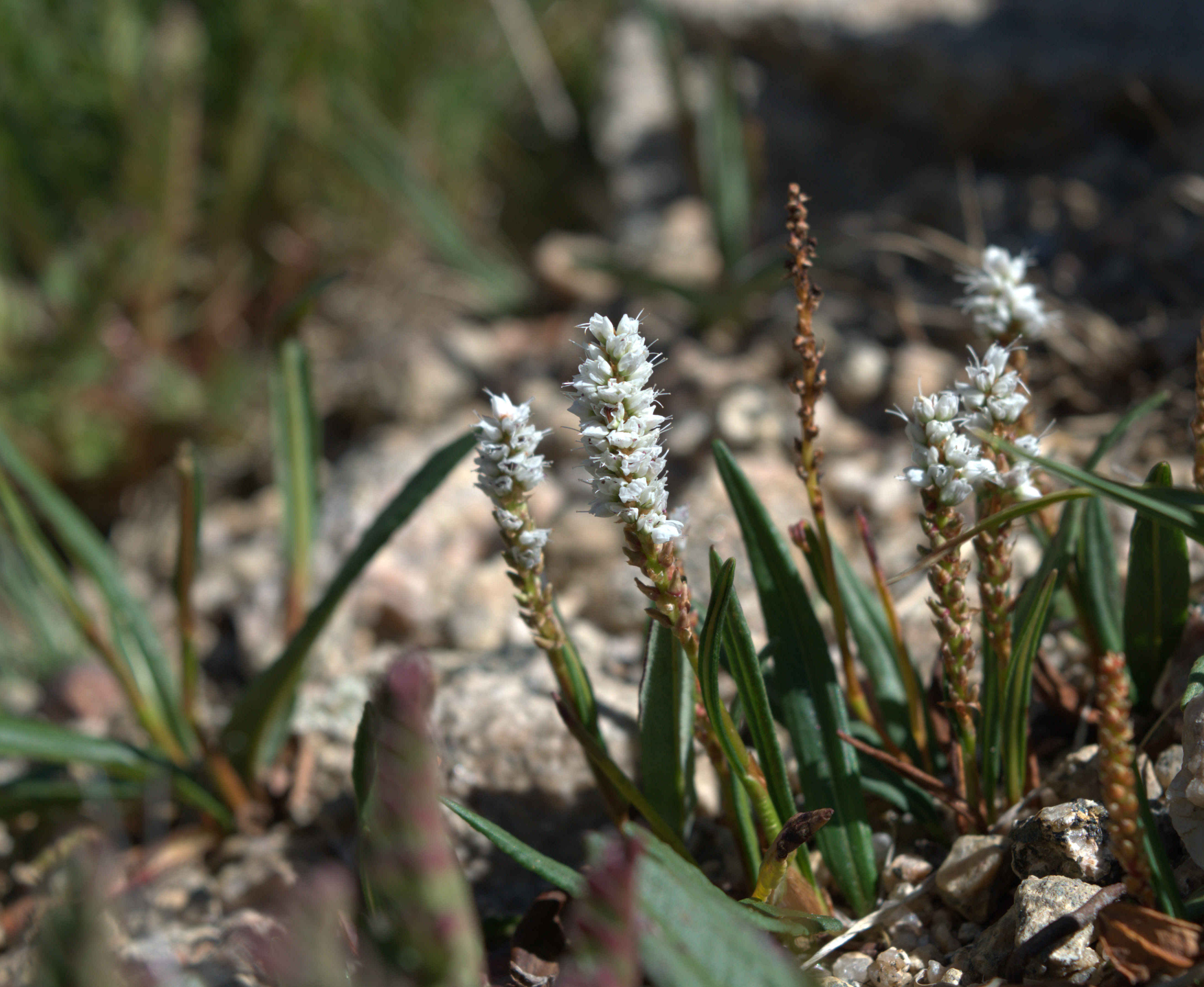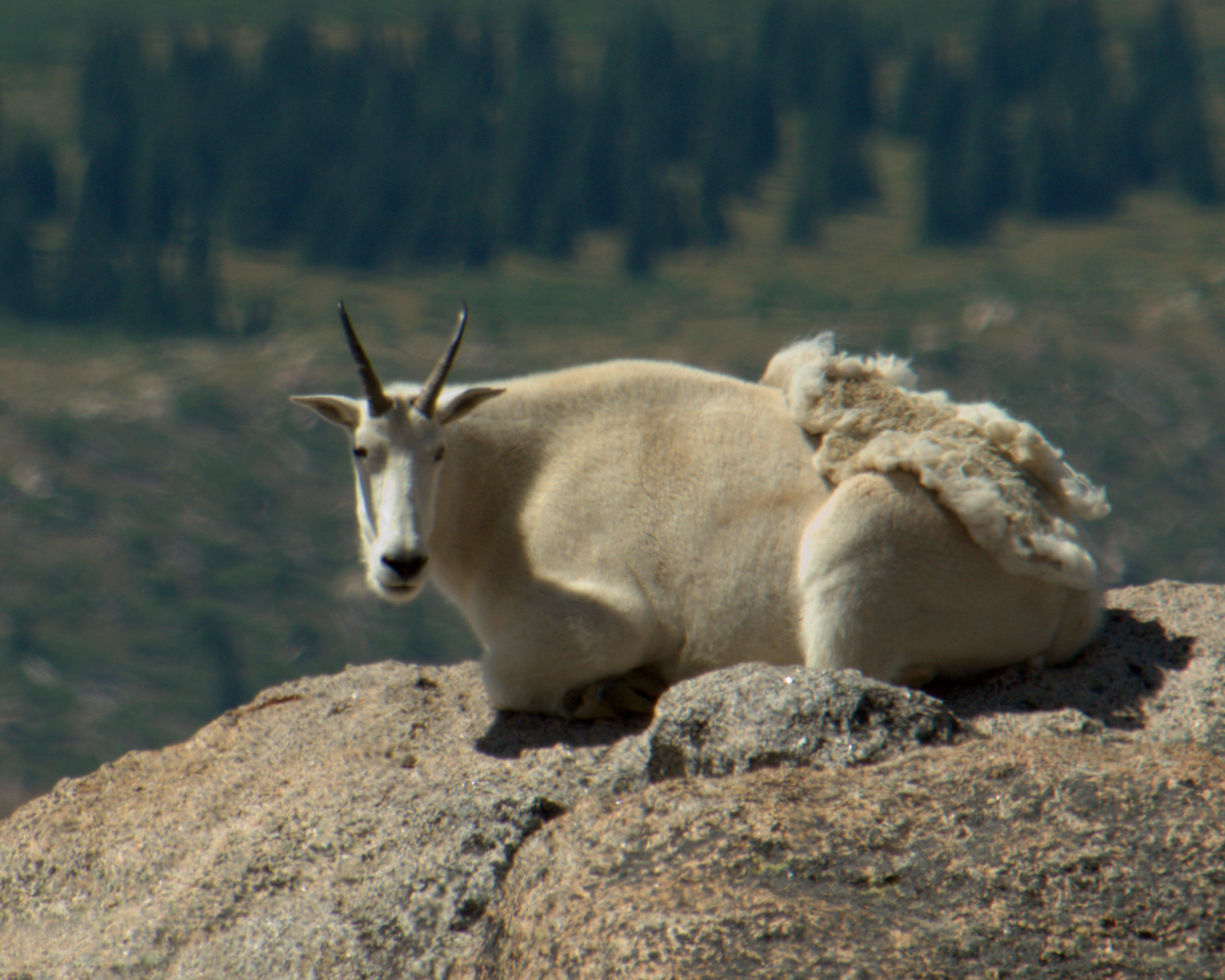I finally made it up to the tundra yesterday, not Trail Ridge Road this time, but Mt. Evans, outside of Denver.
Mt. Evans is nearly unique in the world in that it is a 14,130 foot mountain with a road essentially to the top (you have to park and walk the last thirty feet or so). It makes it an easy trip to get to my favorite biome — the alpine tundra.
I went up hoping, as always to see wildlife. But what I got an eyefull of was flowering plants.

This view is of Summit Lake, actually a mile or so before the actual summit. Initially, I was going to just take a picture of the white American bistort in the foreground, but this was such a beautiful shot, I took it first.
Goldflower is in the sunflower family. It is one of the larger flowers in the tundra, standing several inches tall. About half of that is take up with the big flower disk.

One of the things that surprised me was the number of flies on the flowers. But then I found out that bees don’t make it up this high, and so flies are the main pollinators.

I don’t get repulsed by much, but it is hard for me to have kind thoughts about flies in general. But if they are pollinating flowers, I guess I need to try to think better of them.

Bistorts are in the buckwheat family. This species is relatively large at several inches.

Most alpine flowers, though are tiny, like this alpine bistort, standing about an inch tall. To get this shot, I had to lie down on my stomach, with my camera on the ground.

Even if the plant normally grows upright, the frequent winds forces them low to the ground.

I had a heck of a time figuring out some of these plants. I think this is alpine Indian paintbrush. If you know, let me know.

At the very top of Mt. Evans, I finally found some mountain goats. Mountain goats are different from Rocky Mountain bighorn sheep. They are goats (duh!), with very sharp horns and a hump at their shoulder.

Bighorn sheep, on the other hand, have thick horns that they use to batter each other with. They have no hump at their shoulders.

Leave a comment